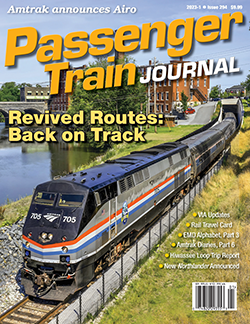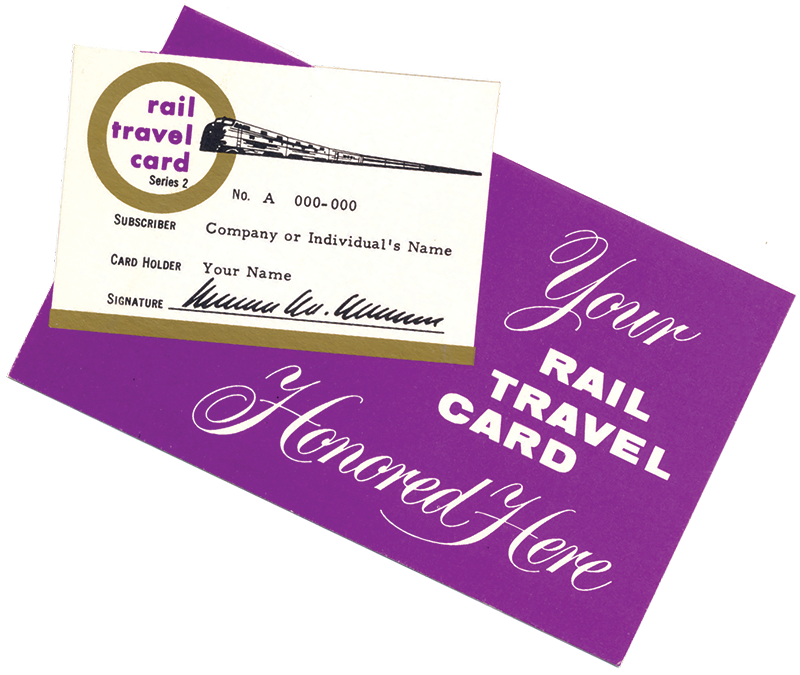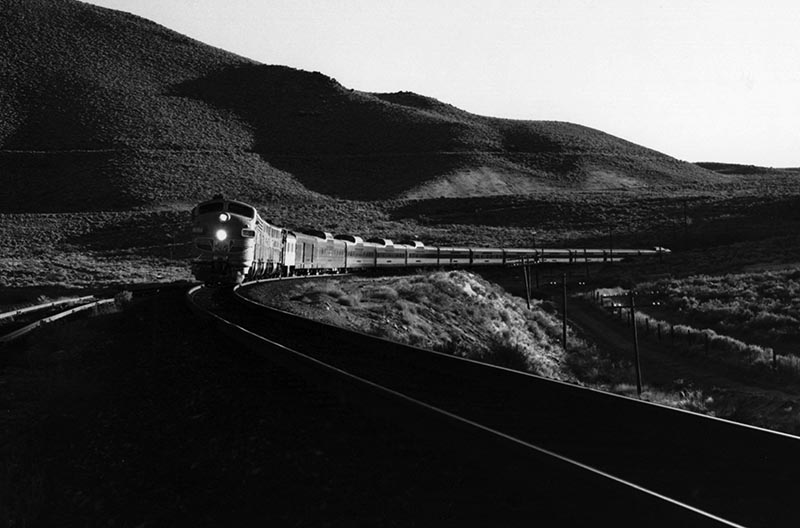 by Karl Zimmermann/photos by the author
by Karl Zimmermann/photos by the author
Looking back from the perspective of today’s world, where cash has become almost obsolete and even Venmo is old hat, it’s hard to believe how we paid for stuff, in particular travel by train, in the years just before Amtrak, half-a-century-plus ago, when the private railroads ran the last remnants of their great streamliners. The handwriting was on the wall, and “ride ’em while you can” became the rallying cry of the faithful.
My wife, Laurel, and I took it to heart, so we used our Rail Travel Card until it became stained and dog-eared. It stood us in good stead, as from the late sixties into 1971 we sampled many trains: Chesapeake & Ohio’s FFV, Sportsman, and George Washington (those were for our honeymoon to the Homestead in Hot Springs, Va.); Seaboard Coast Line’s Florida Special and Silver Meteor; Burlington and partners’ California Zephyr, and Q’s Denver Zephyr too; Union Pacific’s Butte Special, City of Portland, and City of Los Angeles; Southern Pacific’s Del Monte, Cascade, and Coast Starlight; Baltimore & Ohio’s Capitol Limited; Kansas City Southern’s Southern Belle; Pacific Great Eastern’s Cariboo Dayliner; Delaware & Hudson’s Montreal Limited and Laurentian; Santa Fe’s Super Chief; Erie Lackawanna’s Lake Cities; Norfolk & Western’s Pocahontas; Illinois Central’s Panama Limited and City of Miami; and Louisville & Nashville’s Pan American.

Generally speaking, those railroads wouldn’t have accepted the standard credit cards even if we’d had them, so in many cases the “ticket to ride” was that unassuming slip of frail cardboard called the Rail Travel Card. Today there are more than a billion active credit cards in American pockets, and 70 percent of us have at least one. Some stores in the United States have gone cashless, sometimes defying local ordinances, and Sweden nationally has become largely cashless.
The mother of all credit cards (other than department store charge cards) was the Diners Club card, which was paper when initiated in 1950, good only in New York City at 28 restaurants and two hotels. (It lives on today as Diners Club International.) The American Express card debuted in 1958 and went plastic the following year. Apparently I didn’t get one until 1978; not sure why, but I guess I was happy with American Express traveler’s cheques (there were other providers, too), which from this distance seem cumbersome. Also in 1958 came the BankAmericard, which in 1976 became Visa, and in 1966 Master Charge, which in time morphed into Mastercard…



